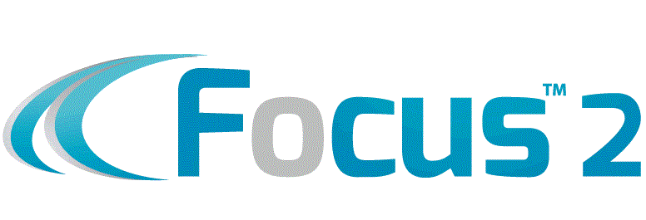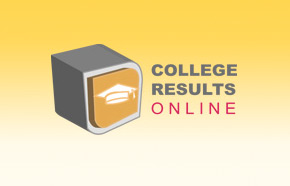college discriminates between genders
Sex bias probe in colleges' selections
Yep, colleges do discriminate between male and female students. Here is an article from the Washington Post.
Panel to study whether men are favored in area schools' admissions By Daniel de Vise
Washington Post Staff Writer Monday, December 14, 2009
Civil rights investigators will soon begin reviewing admissions data from a sampling of colleges in the Washington region to determine whether, after decades of progress toward sexual equity, female students have become so plentiful in higher education that institutions have entered a new era of discrimination against them.
Women apply in greater numbers than men to most colleges in the D.C. area. They make up at least three-fifths of the applicant pool at a number of schools, including the College of William and Mary in Virginia, Goucher and St. Mary's colleges in Maryland and American University in the District.
Anecdotal evidence suggests that some schools are favoring men by admitting them at higher rates than women to try to preserve a male-female balance on campus. Conventional admissions-office wisdom dictates that colleges dominated by either sex are less appealing to applicants in general.
William and Mary admitted 43 percent of its male applicants and 29 percent of its female applicants in fall 2008, according to its institutional data. Vassar College in New York's Hudson Valley admitted 34 percent of the men who applied and 21 percent of the women. Swarthmore College in Pennsylvania admitted 19 percent of male applicants and 14 percent of female applicants. Wesleyan University in Connecticut admitted 30 percent of the men and 25 percent of the women. Female applicants far outnumbered male candidates at all four schools.
"At some ambiguous tipping point, an institution may begin to appeal to a narrower demographic if it begins to appear more like a single-sex environment," Henry Broaddus, dean of admission at William and Mary, wrote in a November posting to The Washington Post's blog The Answer Sheet. Broaddus is one of the few college admission officers who have publicly acknowledged balance between sexes as a legitimate interest in assembling a freshman class. He said that men admitted to William and Mary rival women in academic credentials, even with a higher admission rate.
Comments such as his, disseminated in op-ed pieces and news articles, prompted a member of the U.S. Commission on Civil Rights to call for an investigation. In an August proposal, Commissioner Gail Heriot wrote of potential discrimination by sex as an "open secret" that demanded further study.
"Privately at least, some college administrators argue that they must discriminate against women or the gender balance at their institutions will become so off-kilter that many of the women they want won't be willing to attend," she wrote. "Colleges will then be unable to attract the female students they want most -- or so they fear."
Over the past 40 years, women have gone from underrepresented minority to overrepresented majority on U.S. college campuses, where they outnumber men by a proportion approaching 60-40. Barriers that kept women from college have been swept away, and scholarly focus has shifted to the impediments facing men, who are more likely to drop out of school and more apt to go into the military, manual-labor jobs or prison.
"It's always going to be an issue because there are not enough men in the pipeline," said Gil Villanueva, dean of admission at the University of Richmond, another liberal arts school with a preponderance of female applicants.
The tipping point is not a figment of some dean's imagination. Rebecca Guterman, a senior at Montgomery Blair High School in Silver Spring, knows she might have a more difficult time gaining admission to some colleges because she is female. She wouldn't want to attend a school dominated by high-achieving women like herself.
"I don't know the exact percentage, for me, where it would be too much," she said. "But I think if a school were, like, 80 percent female, that's pushing it, because that's just too many girls."
The federal commission approved a civil rights investigation in September. On Wednesday, commissioners are expected to approve a slate of 12 to 18 schools for study. Commission spokeswoman Lenore Ostrowsky said all of the colleges are nonprofit, non-seminary, four-year institutions that have more than 1,000 students, are at least moderately selective and are within 100 miles of Washington, an area chosen for its proximity to the commission. More distant schools, including William and Mary, will not be investigated.
An informal analysis by The Post of admission data for a dozen public and private colleges in the Washington area over the past two years found seven -- University of Maryland campuses in College Park and Baltimore County; William and Mary; Johns Hopkins; George Washington University; St. Mary's College of Maryland; and the University of Richmond -- that admitted women at a lower rate than men in both 2007 and 2008. In some cases, the gap between male and female admission rates was minute.
Four other schools -- American University, the University of Virginia, George Mason University and Goucher College -- admitted women at a higher rate than men in those years. At the 12th school, Washington and Lee University, women were admitted at a lower rate one year, and higher in the other.
Private undergraduate colleges may legally discriminate by sex, a protection that allows single-sex institutions to endure. Public colleges may not. If a state-supported school such as U-Md. or William and Mary were found to be setting a higher standard for women, "that would be illegal," Ostrowsky said.
The commission lacks enforcement power but can refer complaints to other agencies for action and can recommend changes to federal law.
Civil rights investigators will request a range of data from each of the chosen schools to determine the relative academic merits of male and female applicants who were admitted, wait-listed or rejected, as well as the kind and amount of aid offered to applicants. The investigation might lead to a public briefing with witness testimony, or it could end less dramatically with only a written report. If schools cooperate, the work could be finished in six months, Ostrowsky said.
According to higher-education leaders, investigators will be hard-pressed to find a college, public or private, that is intentionally favoring one sex over the other. Most of the region's selective colleges practice "holistic" admissions, a process that considers each applicant as an individual, and as a whole, rather than as a sum of grades, test scores and demographic traits, in the quest to build a diverse class.
"In terms of importance, an applicant's gender is near the bottom of the list of factors considered," said Tony Pals, spokesman for the National Association of Independent Colleges and Universities in the District.
Some D.C. area colleges have widened their gender gap by admitting women at higher rates than men. American, for example, admitted 55 percent of female applicants in 2008 and 50 percent of male applicants, even though more than three-fifths of its applicants were women.
American University passed the 60-40 tipping point years ago, said Sharon Alston, executive director for enrollment management at AU. She sees little evidence that prospective students are deterred. She concedes that things might be different if AU were a remote rural campus, rather than one in a sprawling metropolis.
"We're not seeing it as a turnoff," she said. "It's something that the university has embraced. We are who we are."





